
The Heart of Brussels: City Center
Discover the enchanting blend of history, culture, and modern vibrancy in the heart of Brussels, Belgium's captivating capital city center.
Welcome to the City Center of Brussels, the beating heart of Belgium's vibrant capital. This neighborhood is a captivating blend of historical charm and modern vibrancy, making it an essential destination for any traveler. At the core of the City Center is the Grand Place, a UNESCO World Heritage site renowned for its opulent architecture and bustling atmosphere. Surrounded by guildhalls, the Town Hall, and the King's House, this square is a perfect spot to soak in the rich history and culture of Brussels. Wander through the cobblestone streets and discover an array of shops, cafes, and restaurants offering everything from traditional Belgian waffles and chocolates to contemporary cuisine. The City Center is also home to some of the city's most iconic landmarks, such as Manneken Pis, the Galeries Royales Saint-Hubert, and the Brussels Stock Exchange. Art enthusiasts will find delight in the numerous museums and galleries, including the Museum of the City of Brussels and the Magritte Museum, showcasing the works of the surrealist artist René Magritte. For those who enjoy a lively nightlife, the City Center offers a variety of bars, clubs, and music venues to keep you entertained long into the night. Whether you're here for a day or a week, the City Center of Brussels promises an unforgettable experience filled with history, culture, and excitement.
Local tips in Brussels City Center
- Wear comfortable shoes as the streets are cobblestone and can be uneven.
- Visit the Grand Place at night when it is beautifully illuminated.
- Try local delicacies like Belgian waffles, chocolates, and fries from street vendors.
- Consider purchasing a Brussels Card for discounts on museum entries and attractions.
- Be cautious of pickpockets in crowded areas, especially around the Grand Place.
The Heart of Brussels: City Center
Welcome to the City Center of Brussels, the beating heart of Belgium's vibrant capital. This neighborhood is a captivating blend of historical charm and modern vibrancy, making it an essential destination for any traveler. At the core of the City Center is the Grand Place, a UNESCO World Heritage site renowned for its opulent architecture and bustling atmosphere. Surrounded by guildhalls, the Town Hall, and the King's House, this square is a perfect spot to soak in the rich history and culture of Brussels. Wander through the cobblestone streets and discover an array of shops, cafes, and restaurants offering everything from traditional Belgian waffles and chocolates to contemporary cuisine. The City Center is also home to some of the city's most iconic landmarks, such as Manneken Pis, the Galeries Royales Saint-Hubert, and the Brussels Stock Exchange. Art enthusiasts will find delight in the numerous museums and galleries, including the Museum of the City of Brussels and the Magritte Museum, showcasing the works of the surrealist artist René Magritte. For those who enjoy a lively nightlife, the City Center offers a variety of bars, clubs, and music venues to keep you entertained long into the night. Whether you're here for a day or a week, the City Center of Brussels promises an unforgettable experience filled with history, culture, and excitement.
Iconic landmarks you can’t miss
Grand Place
Discover the architectural beauty and vibrant culture of Grand Place, Brussels' historic square and UNESCO World Heritage site, a must-visit for all tourists.
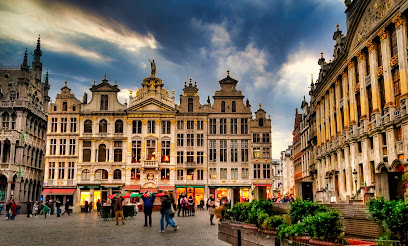
Atomium
Discover the Atomium, a stunning architectural landmark in Brussels, showcasing culture, history, and breathtaking views of the city.

Manneken Pis
Explore Manneken Pis, the quirky fountain in Brussels that embodies the city's playful spirit and rich cultural heritage. A must-see landmark for every traveler.

Parc du Cinquantenaire
Explore the lush landscapes and rich history of Parc du Cinquantenaire, a premier park destination in Brussels, perfect for relaxation and cultural enjoyment.

St Michael and St Gudula Cathedral, Brussels
Explore the stunning St Michael and St Gudula Cathedral in Brussels, a masterpiece of Gothic architecture and a testament to the city's rich history.

Mount of the Arts
Explore the Mount of the Arts in Brussels—a historical gem with breathtaking views, exquisite architecture, and a vibrant cultural scene.

Parlamentarium
Discover the Parlamentarium in Brussels: An interactive museum showcasing the European Union's history and the workings of democracy.

Koningsplein - Beeld van Godfried van Bouillon
Experience the grandeur of Koningsplein, a historic square in Brussels celebrating Godfried van Bouillon, surrounded by beautiful architecture and vibrant culture.

Brussel-Centraal
Discover Brussels Central Station, a key transit hub and architectural gem in the heart of Belgium, connecting you to captivating destinations.

Brussels Town Hall
Discover the Gothic splendor of Brussels Town Hall, a historical gem in the heart of the city's UNESCO-listed Grand Place.
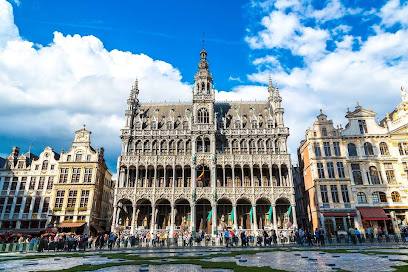
SQUARE Brussels Meeting Centre
Explore the SQUARE Brussels Meeting Centre, where modern design meets cultural heritage in the heart of Belgium's vibrant capital.

Best Western City Centre
Stay comfortably in the heart of Brussels at Best Western City Centre, your ideal base for exploring the city’s rich culture and attractions.

Best Western Royal Centre
Discover the charm of Brussels with a stay at Best Western Royal Centre - your gateway to the city's historic attractions and vibrant culture.
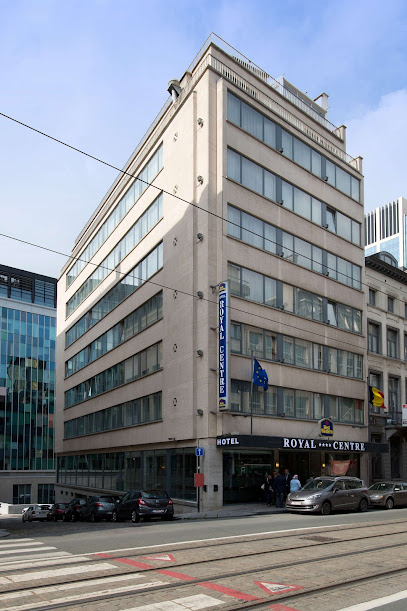
Beursschouwburg
Explore Beursschouwburg, Brussels' premier art center, offering a fusion of contemporary art, performances, and nightlife in a unique cultural setting.

Black Tower
Explore the Black Tower in Brussels, a historic landmark surrounded by modernity that embodies the city's rich architectural heritage and vibrant culture.

Unmissable attractions to see
Grand Place
Discover the stunning architecture and vibrant culture of Grand Place, Brussels' UNESCO World Heritage site, a must-visit for every traveler.

Manneken Pis
Explore Manneken Pis, the charming fountain statue that embodies Brussels' spirit and humor, a must-see attraction in the heart of Belgium.
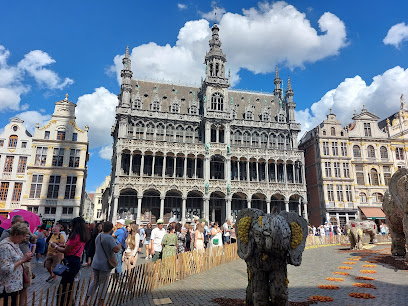
Parc du Cinquantenaire
Experience the serene beauty and rich history of Parc du Cinquantenaire, a must-visit green oasis in the heart of Brussels.

St Michael and St Gudula Cathedral, Brussels
Discover the magnificent St. Michael and St. Gudula Cathedral in Brussels, a breathtaking Gothic masterpiece and a cultural cornerstone of Belgium.

Mount of the Arts
Discover the enchanting Mount of the Arts in Brussels, a historical site that beautifully blends culture, art, and breathtaking views.

Parlamentarium
Explore European democracy at the Parlamentarium, Brussels' premier museum and visitor center dedicated to the European Parliament.

Koningsplein - Beeld van Godfried van Bouillon
Explore the grandeur of Koningsplein, a historical square in Brussels featuring the iconic statue of Godfried van Bouillon and stunning architectural beauty.

Comics Art Museum
Explore the fascinating world of Belgian comics at the Comics Art Museum in Brussels, showcasing iconic artists and interactive exhibits.
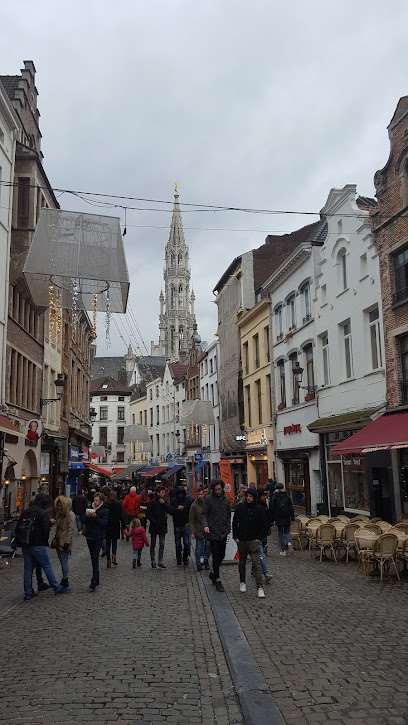
Congress Column
Discover the Congress Column in Brussels, a historic monument celebrating Belgium's independence, surrounded by beautiful gardens and vibrant city life.

Triumphal Arch
Explore the grandeur of Brussels at the Triumphal Arch, a historic monument surrounded by lush gardens and cultural treasures.

Enygma
Discover the excitement of Enygma in Brussels, where thrilling escape room challenges await, perfect for groups and adventure seekers.

Royal Palace of Brussels
Discover the Royal Palace of Brussels, a stunning blend of history, culture, and majestic architecture in the heart of Belgium's capital city.

Black Tower
Explore the Black Tower in Brussels—an iconic tourist attraction reflecting the city's rich history and stunning architecture.

Water Fun At The Fair
Explore Water Fun At The Fair in Brussels - a captivating fountain attraction perfect for families and thrill-seekers alike.

Essential places to dine
Belga Queen
Experience the best of Belgian cuisine at Belga Queen - where tradition meets modernity in an elegant setting.

Au Vieux Saint Martin
Experience authentic Belgian cuisine at Au Vieux Saint Martin, where tradition meets flavor in the heart of Brussels.

Comme Chez Soi
Experience the elegance of fine dining at Comme Chez Soi in Brussels, where French culinary artistry meets exceptional service.

La Table de Mus
Experience modern European cuisine at La Table de Mus in Brussels, where tradition meets innovation in every exquisite dish.

Au Pleysier
Discover the essence of Belgian and modern French cuisine at Au Pleysier in Brussels—an unforgettable dining experience awaits.

Midtown Grill Brussels
Experience authentic American cuisine at Midtown Grill Brussels – a haven for barbecue lovers and meat enthusiasts in Belgium's vibrant capital.
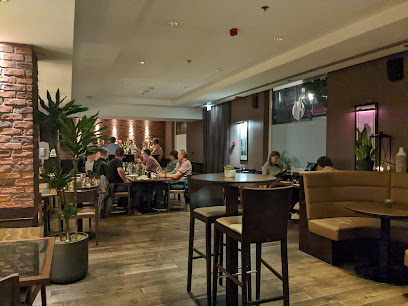
L’Ana Thème
Discover L’Ana Thème: A culinary haven in Brussels offering authentic Belgian dishes in a warm and inviting atmosphere.

À l'Ombre de la Ville
Discover authentic Mediterranean flavors at À l'Ombre de la Ville, where exquisite cuisine meets a cozy atmosphere in Brussels.

De Bruxelles et d'Ailleurs
Experience authentic Belgian cuisine at De Bruxelles et d'Ailleurs in Brussels - where tradition meets flavor in every dish.

GourmetBar Brussels City Centre
Discover GourmetBar in Brussels City Centre - where local flavors meet modern dining in a stylish atmosphere.
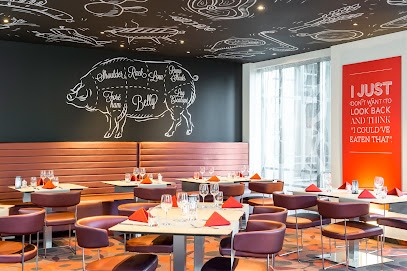
Markets, malls and hidden boutiques
Royal Gallery of Saint Hubert
Explore the Royal Gallery of Saint Hubert, a dazzling shopping arcade in Brussels, blending history, luxury, and Belgian culture in one captivating destination.

Docks Bruxsel
Explore Docks Bruxsel: A dynamic shopping mall offering fashion, dining, and entertainment in the heart of Brussels.

City2
Experience the best of shopping, dining, and entertainment at City2, the premier shopping mall in the heart of Brussels.

Anspach Shopping Center
Explore the vibrant Anspach Shopping Center in Brussels - your ultimate shopping destination with diverse stores and delightful dining options.

The Tintin shop
Explore The Tintin Shop in Brussels - a treasure trove of comic books, collectibles, and the beloved adventures of Tintin.

The Mint Brussels
Explore The Mint Brussels, a modern shopping haven offering diverse retail and dining experiences in the heart of Belgium's capital city.

Nature & Découvertes
Explore Nature & Découvertes for eco-friendly gifts, outdoor gear, and unique souvenirs in the heart of Brussels. A must-visit for nature lovers!
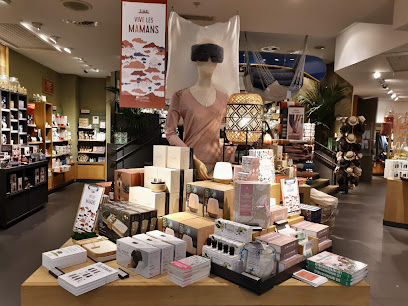
Centreville Store
Discover unique fashion at Centreville Store in Brussels, where style meets culture in a charming shopping experience.

Manneke
Explore Manneke, Brussels' charming souvenir store offering unique gifts, local beers, and stylish clothing that capture the essence of Belgium.

Eclectic Store
Explore the Eclectic Store in Brussels for unique custom t-shirts, local art, and fashionable finds that capture the spirit of the city.

Orybany
Explore Orybany in Brussels: A unique gift shop and coworking space blending local artistry with creativity.

I Love Belgium
Explore the heart of Brussels at 'I Love Belgium', your go-to store for unique souvenirs and authentic Belgian gifts.

Euro-Style
Explore Euro-Style Gift Shop in Brussels for unique souvenirs, local crafts, and authentic Belgian chocolates that capture the essence of your travels.

CADEAUX ET SOUVENIRS DE BRUXELLES
Discover authentic Belgian souvenirs at Cadeaux et Souvenirs de Bruxelles, where culture meets craftsmanship in the heart of Brussels.

Essential bars & hidden hideouts
Delirium Café
Dive into the vibrant atmosphere of Delirium Café, Brussels' iconic bar with over 3,000 beers, capturing the essence of Belgian brewing culture.
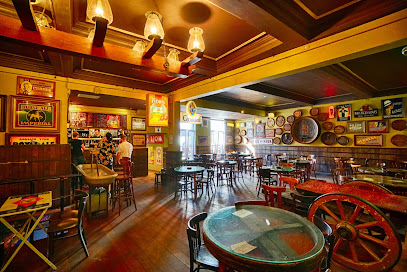
Moeder Lambic Fontainas
Discover the heart of Belgian beer culture at Moeder Lambic Fontainas - a vibrant beer hall in Brussels offering an extensive selection of craft brews.

Bar Des Amis
Discover the vibrant atmosphere of Bar Des Amis in Brussels, where exquisite drinks and local charm create unforgettable experiences for tourists.

LA PHARMACIE ANGLAISE
Discover LA PHARMACIE ANGLAISE in Brussels - A cocktail bar offering innovative drinks and an unforgettable experience in a chic atmosphere.

Golden Bar
Experience the vibrant atmosphere of Golden Bar, a top pub in Brussels offering a delightful selection of Belgian beers and a welcoming ambiance.

The Green Man Cocktail bar
Experience the vibrant nightlife of Brussels at The Green Man Cocktail Bar, where innovative cocktails meet a warm and inviting atmosphere.

Floris Bar
Experience the vibrant nightlife of Brussels at Floris Bar, where great drinks meet a lively atmosphere in the heart of the city.

Lord Byron
Discover the trendy Lord Byron cocktail bar in Brussels, where innovative drinks meet a cozy atmosphere for an unforgettable night out.

Scène Bar Brussels
Discover the lively essence of Brussels nightlife at Scène Bar, where eclectic decor meets a vibrant atmosphere and local flavors.

Floris Tequila(Delirium bar)
Experience the vibrant nightlife of Brussels at Floris Tequila, where exceptional tequila and a lively atmosphere await.

Local Phrases
-
- HelloBonjour
[bon-zhoor] - GoodbyeAu revoir
[oh rev-wahr] - YesOui
[wee] - NoNon
[non] - Please/You're welcomeS'il vous plaît
[seel voo pleh] - Thank youMerci
[mehr-see] - Excuse me/SorryExcusez-moi
[ehk-skew-zay mwa] - How are you?Comment ça va?
[kom-mohn sah vah] - Fine. And you?Bien. Et vous?
[byen. ay voo] - Do you speak English?Parlez-vous anglais?
[par-lay voo ahn-glay] - I don't understandJe ne comprends pas
[zhuh nuh kohm-prahnd pah]
- HelloBonjour
-
- I'd like to see the menu, pleaseJe voudrais voir la carte, s'il vous plaît
[zhuh voo-dray vwar lah kart, seel voo pleh] - I don't eat meatJe ne mange pas de viande
[zhuh nuh mahnzh pah duh vee-ahnd] - Cheers!Santé!
[sahn-tay] - I would like to pay, pleaseJe voudrais payer, s'il vous plaît
[zhuh voo-dray pay-ay, seel voo pleh]
- I'd like to see the menu, pleaseJe voudrais voir la carte, s'il vous plaît
-
- Help!Au secours!
[oh suh-coor] - Go away!Allez-vous en!
[ah-lay vooz ahn] - Call the Police!Appelez la police!
[ah-pleh lah po-lees] - Call a doctor!Appelez un médecin!
[ah-pleh zuhn may-deh-sahn] - I'm lostJe suis perdu
[zhuh swee pair-doo] - I'm illJe suis malade
[zhuh swee mah-lahd]
- Help!Au secours!
-
- I'd like to buy...Je voudrais acheter...
[zhuh voo-dray zheh-tay] - I'm just lookingJe regarde juste
[zhuh ruh-gard zhust] - How much is it?Combien ça coûte?
[kom-byen sah koot] - That's too expensiveC'est trop cher
[say troh shair] - Can you lower the price?Pouvez-vous baisser le prix?
[poo-vay voo bay-say luh pree]
- I'd like to buy...Je voudrais acheter...
-
- What time is it?Quelle heure est-il?
[kell er ay teel] - It's one o'clockIl est une heure
[eel ay oon er] - Half past (10)Dix heures et demie
[dees er ay duh-mee] - MorningMatin
[mah-tan] - AfternoonAprès-midi
[ah-pray mee-dee] - EveningSoir
[swahr] - YesterdayHier
[ee-air] - TodayAujourd'hui
[oh-zhoor-dwee] - TomorrowDemain
[duh-mahn] - 1Un
[uhn] - 2Deux
[duh] - 3Trois
[twah] - 4Quatre
[kat] - 5Cinq
[sank] - 6Six
[seez] - 7Sept
[sett] - 8Huit
[weet] - 9Neuf
[nuhf] - 10Dix
[dees]
- What time is it?Quelle heure est-il?
-
- Where's a/the...?Où est le/la...?
[oo ay luh/lah] - What's the address?Quelle est l'adresse?
[kell ay lah-dress] - Can you show me (on the map)?Pouvez-vous me montrer (sur la carte)?
[poo-vay voo muh mohn-tray (soor lah kart)] - When's the next (bus)?Quand est le prochain (bus)?
[kahnd ay luh proh-shan (bus)] - A ticket (to ....)Un billet (vers ....)
[uhn bee-yay (vair)]
- Where's a/the...?Où est le/la...?
History of Brussels City Center
-
Brussels City Center has its roots in the 10th century when a small fort was established on the site of the present-day Brussels Castle. The name 'Brussels' is derived from the Old Dutch term 'Broeksel,' meaning 'a settlement in the marsh.' The strategic location along the Senne River facilitated trade and defense, contributing to its early growth as an important market town.
-
During the 12th and 13th centuries, Brussels became the capital of the Duchy of Brabant, a key region in the Low Countries. The construction of the magnificent St. Michael and St. Gudula Cathedral began in the late 13th century, symbolizing the city's growing importance. This period saw an influx of wealth and culture, as Brussels emerged as a center for trade and governance.
-
The 15th century marked the beginning of Brussels' Golden Age, particularly under the rule of the Burgundian Dukes. The city flourished as a political and cultural hub. The Grand Place, a UNESCO World Heritage site, was constructed during this period, showcasing the opulence of the era with its stunning guildhalls and the Town Hall. This architectural marvel reflects the wealth and influence of Brussels in the late Middle Ages.
-
In the 16th century, Brussels fell under Spanish rule, leading to a period of conflict and religious strife. The Eighty Years' War and the subsequent War of the Spanish Succession brought significant turmoil. However, the city continued to grow, and the 18th century saw the establishment of the Royal Palace, which became a symbol of the Habsburg dynasty's presence in the city, further enhancing its status.
-
The 19th century brought the Industrial Revolution, transforming Brussels City Center into a modern metropolis. Infrastructure improvements, such as the construction of the Brussels North-South Railway, facilitated urban expansion. The Art Nouveau movement flourished during this time, with architects like Victor Horta leaving a lasting imprint on the city’s architectural landscape, exemplified by the iconic Horta Museum.
-
Both World Wars had a profound impact on Brussels City Center. During World War I, the city was occupied but largely spared from destruction. However, World War II brought significant damage, particularly to the city’s infrastructure. Post-war reconstruction efforts revitalized the city, leading to the establishment of the European Union headquarters, which further solidified Brussels' role as a center of international governance and diplomacy.
-
Today, Brussels City Center is a vibrant cultural melting pot, reflecting its history of diversity. The presence of various institutions, such as the European Parliament, alongside historical sites, museums, and theaters, showcases a blend of old and new. The multicultural influences are evident in the city’s culinary scene, festivals, and art, making Brussels a dynamic urban center that celebrates its rich heritage while looking towards the future.
Brussels City Center Essentials
-
Brussels City Center is highly accessible from various neighborhoods in Brussels. You can reach the city center by taking the metro lines 1 or 5 to the Central Station (Gare Centrale). Trains from Brussels Airport to Brussels Central Station also provide a direct connection, taking about 20 minutes. Buses and trams are available, while taxis and rideshare services like Uber can take you directly to your destination.
-
The Brussels City Center is compact and easily navigable on foot. Public transport options include the metro, trams, and buses operated by STIB/MIVB. Consider purchasing a Brussels Card for unlimited access to public transport and discounts at attractions. Biking is also a popular option, with bike-sharing services like Villo! available throughout the city.
-
Brussels is generally safe for tourists, but it's advisable to stay vigilant, especially in crowded areas like the Grand Place and shopping districts. Petty crime such as pickpocketing can occur, particularly in busy public transport areas. Avoiding the area around Gare du Midi at night is recommended, as it has higher crime rates.
-
In case of emergency, dial 112 for police, fire, or medical assistance. Local hospitals and clinics are available for urgent care. It is advisable to have travel insurance that covers medical emergencies. Pharmacies are widely available for over-the-counter medications.
-
Fashion: Do dress comfortably and stylishly; locals appreciate good fashion. Don't wear overly casual attire in upscale restaurants. Religion: Do be respectful at churches and cathedrals; modest attire is appreciated. Public Transport: Do validate your ticket before boarding; don't forget to keep your ticket until you exit. Greetings: Do greet with a friendly 'Bonjour' or 'Hoi'; avoid overly familiar gestures unless invited. Eating & Drinking: Do try local specialties like Belgian waffles and chocolates; don't eat while walking in the city center, as it's considered impolite.
-
To experience Brussels City Center like a local, visit the neighborhood bars and cafés, particularly in the Marolles district for a more authentic vibe. Explore hidden gems like the Cantillon Brewery and the art galleries in the Sablon area. Take time to relax in the Parc Royal or the Mont des Arts, and don’t miss the local markets such as the Place du Jeu de Balle for unique finds.
Trending Landmarks in Brussels City Center
-
Grand Place
-
Atomium
-
Manneken Pis
-
Parc du Cinquantenaire
-
St Michael and St Gudula Cathedral, Brussels
-
Mount of the Arts
-
Parlamentarium
-
Koningsplein - Beeld van Godfried van Bouillon
-
Brussel-Centraal
-
Brussels Town Hall
-
SQUARE Brussels Meeting Centre
-
Best Western City Centre
-
Best Western Royal Centre
-
Beursschouwburg
-
Black Tower
Nearby Cities to Brussels City Center
-
Things To Do in Mechelen
-
Things To Do in Aalst
-
Things To Do in Leuven
-
Things To Do in Louvain-la-Neuve
-
Things To Do in Antwerp
-
Things To Do in Ghent
-
Things To Do in Mons
-
Things To Do in Namur
-
Things To Do in Hasselt
-
Things To Do in Tournai
-
Things To Do in Dinant
-
Things To Do in Kortrijk
-
Things To Do in Genk
-
Things To Do in Bruges
-
Things To Do in Liege













